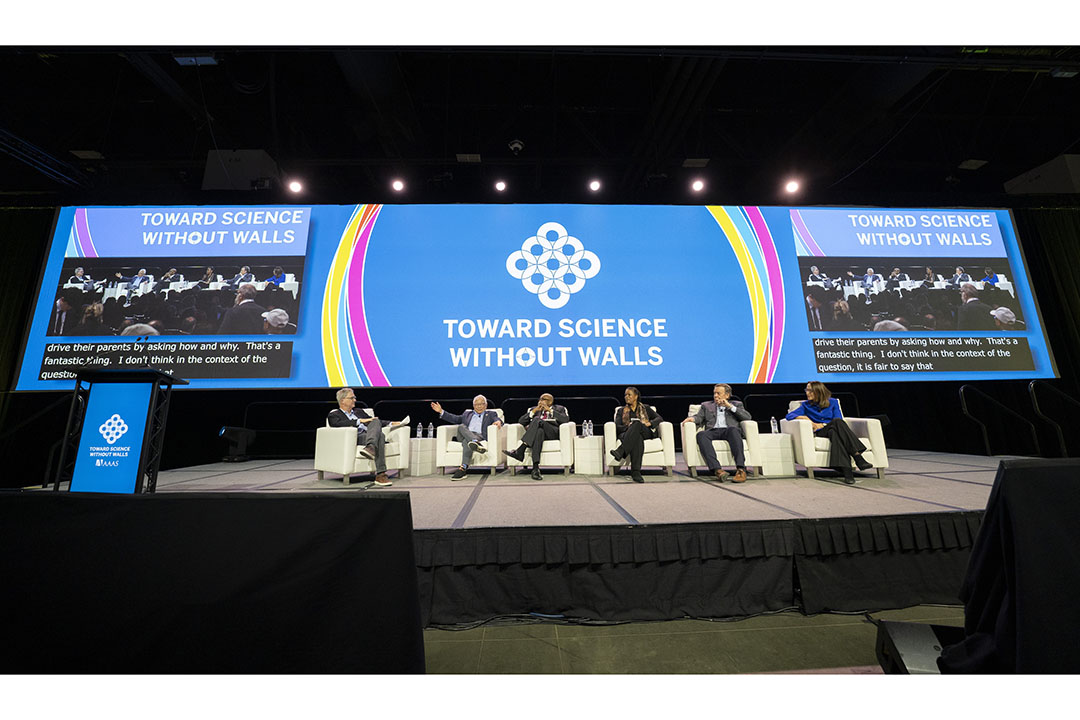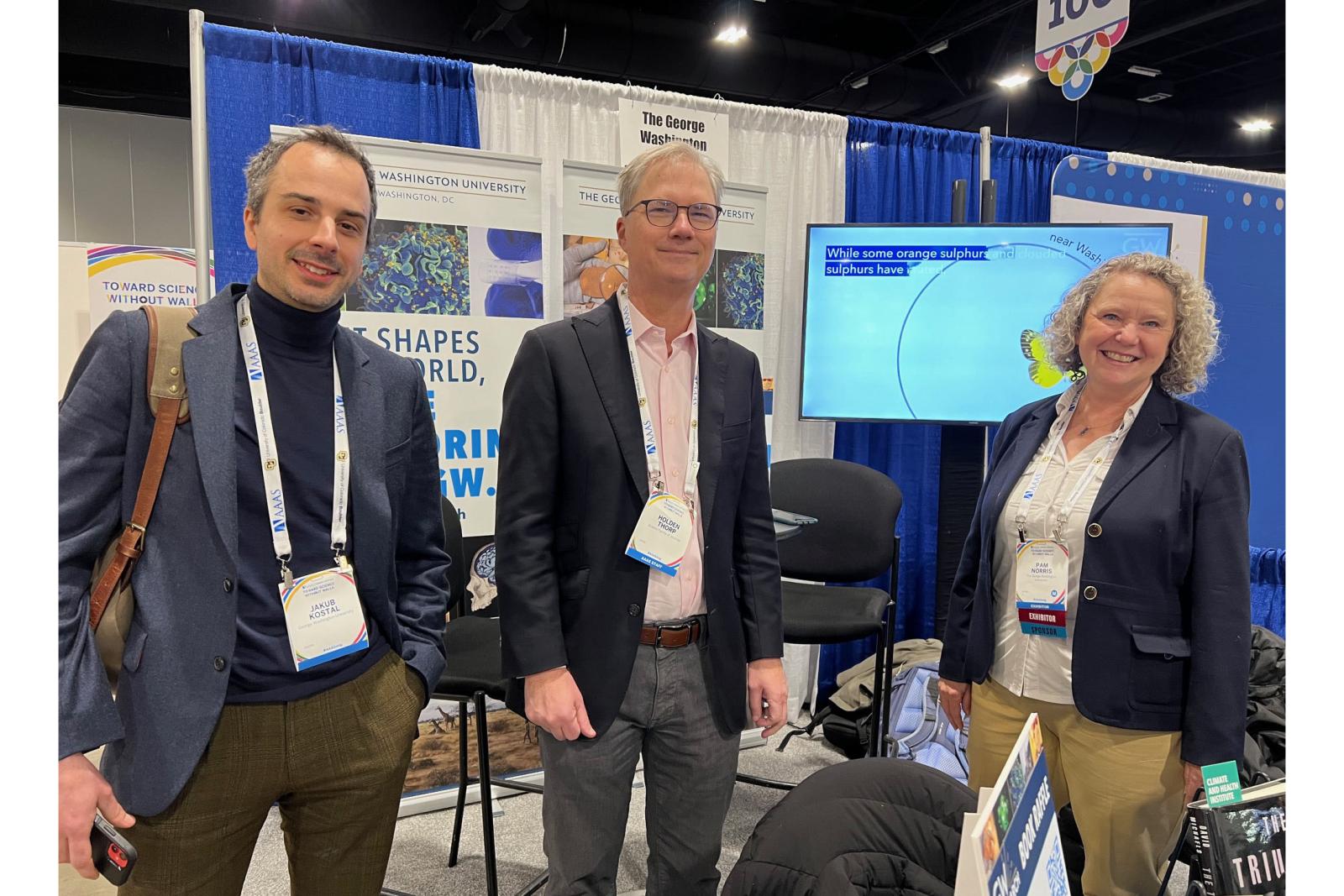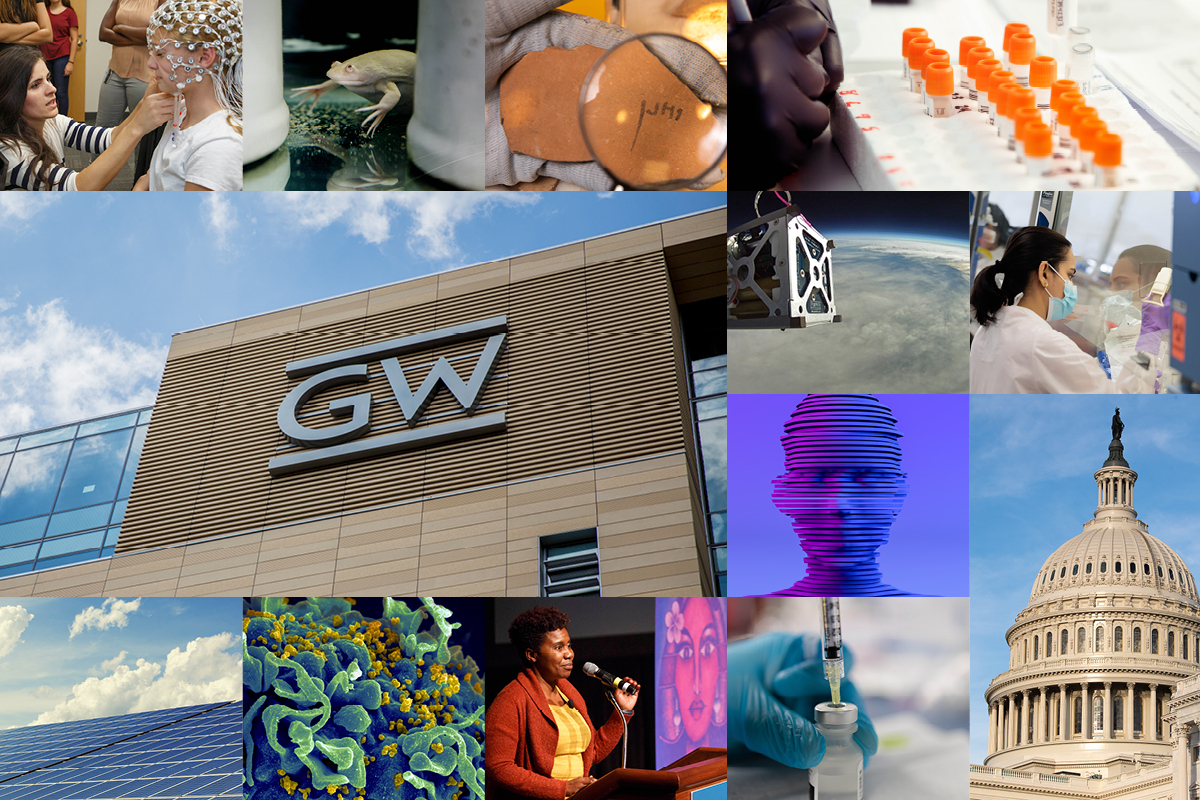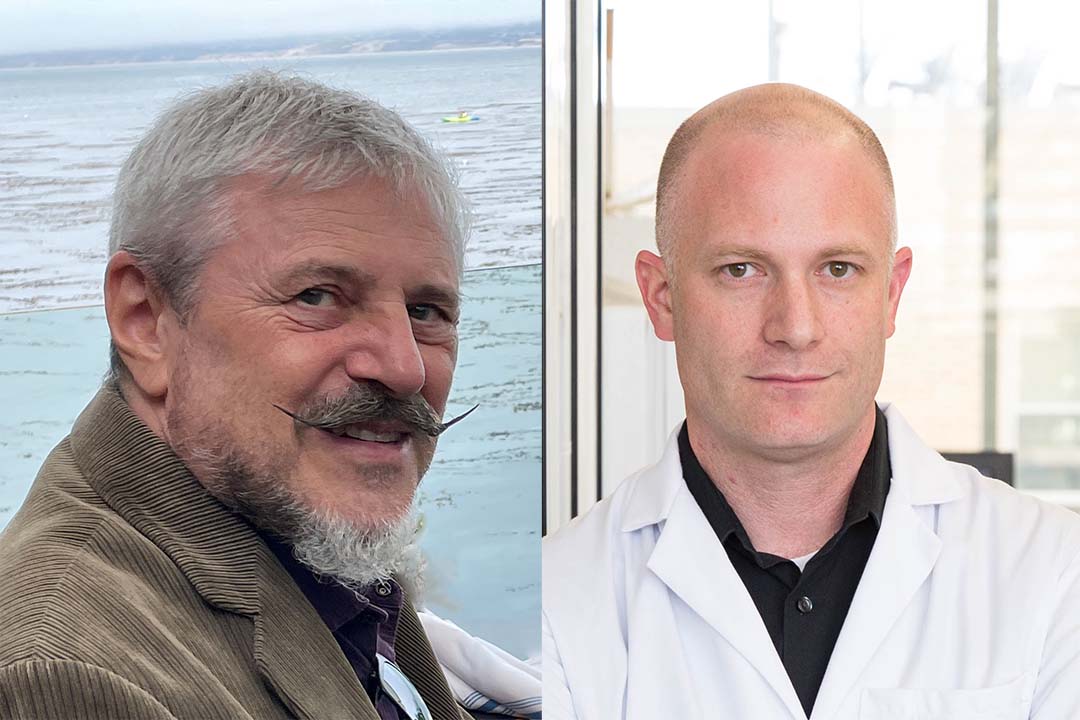“It’s an exciting time to celebrate discoveries, uncover new capabilities and ponder unsolved or unexpected puzzles at scales from the subatomic to universal, from picoseconds to eons, from cells to societies,” Keith Yamamoto, president of the American Association for the Advancement of Science (AAAS), said in his plenary address at the start of the 190th AAAS Annual Meeting.
That excitement was palpable at the three-day meeting of the world’s largest, multi-disciplinary science society, which took place Feb. 15-17 at the Colorado Convention Center in Denver. More than 4,500 attendees from 65 countries attend the meeting each year, where researchers, students, science journalists, research foundations and government representatives attend a range of sessions, lightning talks, e-poster presentations, workshops and more.
Seeking to spotlight the university’s scholarship, research initiatives, and state-of-the-art resources, the George Washington University’s Office of the Vice Provost for Research sponsored a booth and a workshop at this year’s meeting. According to Vice Provost for Research Pamela Norris, the AAAS meeting provides a unique opportunity to reach key audiences within the science, technology, engineering, mathematics and medicine (STEMM) enterprise and raise GW’s profile as a top-tier research institution.
“The AAAS Annual Meeting explores emerging topics in science, policy and STEMM education with students, scholars and leaders from government, academia and industry,” said Norris, who attended the meeting in Denver. “GW alumni were excited to see us there. Students got an opportunity to learn about our strong academic programs. And potential collaborators learned about our research institutes and our expertise in entrepreneurship both in the U.S. and internationally.”
Alongside GW’s booth in the convention center’s Expo Hall were representatives from a wide range of government, private and academic institutions, including the National Institute of Standards and Technology (NIST), National Science Foundation (NSF), NASA, Department of Energy, National Academies of Sciences, Engineering and Medicine, Chinese Academy of Sciences, Fulbright Scholars Program and more.
Norris and other GW faculty attending the conference took turns in the booth talking with visitors and answering questions about the university’s academic programs and research. Holden Thorp, professor of chemistry and editor-in-chief of Science; Shelley Brundage, professor and chair of GW’s Speech, Language and Hearing Sciences Department; and Jakub Kostal, associate professor of chemistry, served as on-site experts on everything from editing a scientific journal to the master’s degree program in environmental and green chemistry at GW.
Benedict Vergara, an electrical engineering doctoral student, also spent time in the GW booth speaking with attendees about his experience as both an undergraduate and graduate student at GW and conducting research alongside faculty mentors.
“The AAAS conference emphasized the importance of clear communication among researchers and policymakers,” Vergara said. “I've always felt at GW that we do a good job clearly communicating about our multidisciplinary research, so it is no surprise so many students found GW's booth interesting at the conference. We really are a place that takes advantage of our location to ensure GW research has an impact!”
In addition to the GW booth, Norris’s office sponsored a workshop on lean innovation led by Bob Smith, GW’s director of I-Corps in the Office of Innovation and Entrepreneurship. Smith’s presentation, “The Innovator’s Journey: An Introduction to Lean Innovation,” sought to help workshop attendees take the first steps in converting their discoveries and ideas into innovations ready for the marketplace. The audience asked questions on how to best mentor students interested in launching a business and how to know when it’s time to quit your day job and “go all in.”
“Customer discovery and design thinking are useful tools for any phase of research, regardless of whether one intends to commercialize their work or not,” Smith explained. “It can help set the path research takes while improving win rates for grants, as well as improving the quality of patent filings.”
Smith also shared information with international attendees about how to bring lean startup training to institutions in their countries through partnerships with his office.
Evident throughout many of the sessions was a desire to examine the role of artificial intelligence in science and society. Two of GW’s faculty members–Brundage and Kostal–participated in scientific sessions focused on how AI tools impact everything from communications disorders to safe chemical design.
Brundage organized and moderated a panel on how AI voice assistants like Siri and Alexa pose barriers to people with communications disorders, for example people who stutter or who are deaf or hard of hearing, or people with acquired neurogenic disorders like Parkinson’s Disease. The panel included Hannah Rowe, a GW alumna who studied under Brundage and is now a postdoctoral researcher at Boston University, as well as researchers from Gallaudet University and AImpower.org whose own lived experiences with a communication disorder informs their research and approach to AI solutions that benefit everyone.
Among the barriers the panelists identified in building AI that better serves all people was the scale and variability of the data on which AI systems are trained. They also pointed out the privacy challenges that come with collecting and using data that include recordings of faces and hand gestures, for example, with American Sign Language users.
“There’s a real solution here, which is that you should involve the people for whom you’re building the tool,” Brundage said after the panelists presented and before opening the floor up to questions. “You want to make sure that what you’re building has utility, it has meaning and is representative of the people that it’s trying to help.”
GW’s Kostal participated in a scientific session focused on chemical safety, environmental health and the transition to a more machine-learning based approach.
“Of [commercialized chemicals], about 85% lack health safety data,” Kostal explained in his remarks. “The reason for this is pretty straightforward–it has to do with economics and ethics. For non-specialty chemicals, we lack the resources and are ethically constrained to test all these chemicals on animals.”
Kostal explained that new computational approaches are necessary to advance our ability to develop and test the safety of new chemicals.
“We can simulate the key events in toxicity mechanisms on the molecular level and leverage this insight in machine learning and neural networks to both predict outcomes and to discover new molecules that might have better properties than what is currently available on the market,” Kostal said.
According to Norris, her office is already looking ahead to the next AAAS Annual Meeting, which will take place in Boston.
“These meetings are a fantastic opportunity to connect with STEMM professionals from across fields, to forge partnerships and spotlight some of the cutting-edge research and diverse expertise at GW,” she said. “We look forward to making an even bigger splash at the 2025 meeting.”








